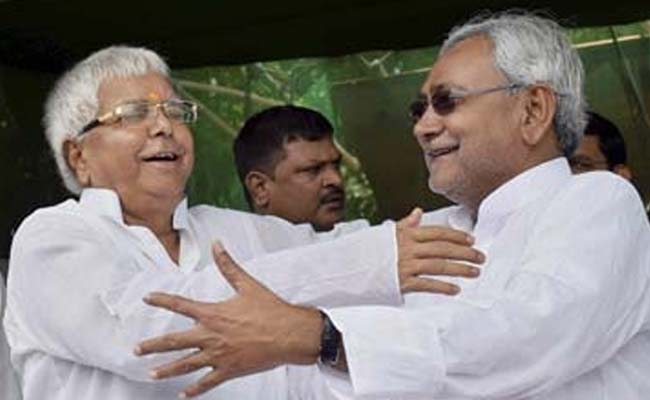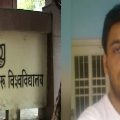Sandhya Jain
On Holi, last month, Muslims in some cities stepped forward to shower festival processions with petals and participate in ‘Holika dahan’, symbolising the triumph of purity over evil. This is not the first time the community has made such spontaneous gestures of goodwill. But it is a time when voices within Indian Islam are struggling to be heard on issues of fundamentalism, terrorism, and their links with certain preachers and madrassas, and on secular concerns such as triple-talaq that threatens the physical and emotional security of women and children.
It needs be said that since Prime Minister Narendra Modi swept to power on a development plank, some have tried to project the victory in triumphalist tones. Instances of harassment of persons accused of eating or selling beef disturb the social fabric; mercifully, the police have wasted no time in apprehending such malcontents.
With Ram Navami round the corner, it may be appropriate to ask our countrymen to end the tortuous litigation over the Babri Masjid /Ram Janmasthan and consider the matter dispassionately. This writer does not favour pressuring the Supreme Court to prioritise the Ram Janmabhoomi case when suits affecting the lives of lakhs of litigants are pending for decades. However, the Allahabad High Court verdict of 2010, which gave one-third of the disputed land to the Muslim litigant, is utterly unsatisfactory and unworkable. Its sole merit is that it put all evidence regarding the dispute on record; this deserves careful reading by all interested in the subject.
Some of the most compelling evidence on Ayodhya, from the location of the ancient city to the ownership and occupation of the land, was discovered by BR Grover (d 2001), former Chairman, Indian Council of Historical Research. Grover was justly renowned for his archival research and enjoyed a formidable reputation as an authority on Mughal land revenue administration.
His extensive study of the original land revenue documents and maps of Ayodhya, judicial records, accounts of eye-witnesses who travelled to Ayodhya in earlier periods, Babur’s memoirs, and other documents and manuscripts in various libraries (in Persian, Arabic, Chaghatay-Turkish, Urdu, Sanskrit, Punjabi and English) have since been published in a single volume, Rama Janamabhoomi: Professor BR Grover’s Analysis of Revenue Records and Historical Facts, ed. Amrita Grover, Dr Anju Grover Chaudhary, Originals, Delhi, 2015.
Grover spent months at the district office in Faizabad, studying the abadi maps, hadbast maps and revenue settlement maps of 1851, 1893 and 1936-37. He examined the earliest revenue documentary evidence traceable to the early 18th century, including those of the Nawabi period and the British ascent, from 1856 onwards, that are linked with the Mughal pattern of revenue administration.
Examining records relating to village Ram Kot, Haveli Awadh, available at the District Record Office at Faizabad, from 1861 to 1990-91, Grover discovered that from the time of the first Regular Settlement in 1861, the land was shown as nazul (Government) and that this had not been disputed or challenged by anyone. The first Regular Settlement Report of Kot Ram Chandra, appended by two maps, was the most comprehensive document relating to the Janmasthan complex comprising Ram Janmabhoomi.
One map was prepared after an on the spot survey and measurement of the khasras relating to kishtwar and abadi. As per erstwhile Nawabi and Mughal practice, it was attested in every respect by the local zamindars/pattidars of various mahalunits, the local revenue officials and witnesses.
The Settlement Report of 1861 was also based on previous summary settlements of 1858-60, and depicted the exact position of Janmasthan/Masjid and neighbouring plots as inherited from the Nawabi period. The revenue documents declared the superior ownership of the land as Sarkar Bahadur Nazul (Government) with the Mahants as under-proprietors (malikan-i-matahit) of the entire Janmasthan complex.
The Settlement Report of 1893 clearly named the sub-plot on which the masjid was situated as Sita Ki Rasoi. Subsequent Settlement Reports of 1936-37 and 1989-90 maintained the same position. There is absolutely no mention of Babri Masjid in the documents preserved by the Revenue Department at the Collectorate and Tehsil at Faizabad.
More pertinently, there is no mention in the revenue records from 1858 to 1991 of any land in Ramkot attached to the masjid as ‘waqf’, for its maintenance. In 1936, the Commissioner of Waqfs ordered an inquiry under the UP Muslim Waqfs Act into the ownership of the property. The inquiry asserted that Babri Masjid was built by Babar, a Sunni Muslim, in 1528.
Even Mohammad Zaki, descendant of the Mutawalli family, claimed in 1938 that Babar built the mosque and appointed Abdul Baqi its Mutawalli and Khattib and provided an annual grant for maintenance of the mosque and the family of the Mutawalli. After the fall of the Mughals, the Awadh Nawab increased the grant. Later, the British provided cash grant till 1864, with some conditions, and entered the mutawalli family in the revenue records as superior proprietors and possessors in possession of the property (malik-i-ala qabiz wa mutsarif jadaid).
The descendants argued that property listed as malkiyat-i-ala could not be regarded a Muslim waqf. Further, grants made by the British Government, a non-Muslim body, could not constitute a Muslim waqf. Neither the Sunni nor Shia Boards of Waqfs, constituted by the UP Muslim Waqfs Act of 1936, made any provisions for the upkeep of the Masjid. Thereafter, the disputed mosque found no mention in the list of waqfs published in the Government Gazette of 1944.
With such tenuous title, Muslims can easily relinquish claim to the site. A mosque is a congregational space, whereas Hindu temples are dwellings of god on earth. In Hindu law and sacred texts, temple property cannot be lost under any circumstances, even if dispossessed for hundreds of years. The Dharma Shastras assert that the rights of a deity are in perpetuity and cannot be curtailed even by a king. The deity (murti) is a legal person and the concept of juristic personality extends to place (sthan), if held sacred by devotees.
Finally, Islamic law does not sanction creation of a mosque on an occupied site. As the Babri mosque was unambiguously erected on the ruins of an extant grand temple, Muslims should withdraw from the site and the dispute. KK Muhammad, former Regional Director (North), Archaeological Survey of India, blames Left historians for instigating and manipulating those who were seriously considering return of the site. Muslims should rethink their association with such elements.
Courtesy: DailyPioneer





